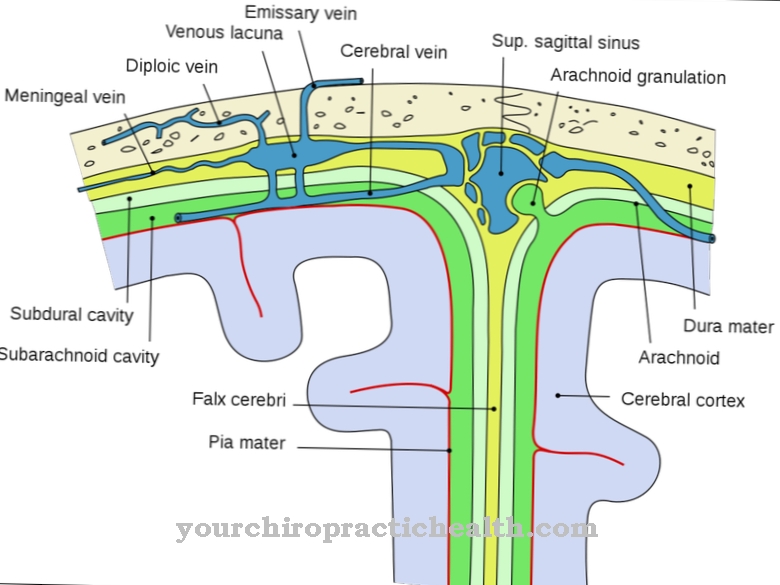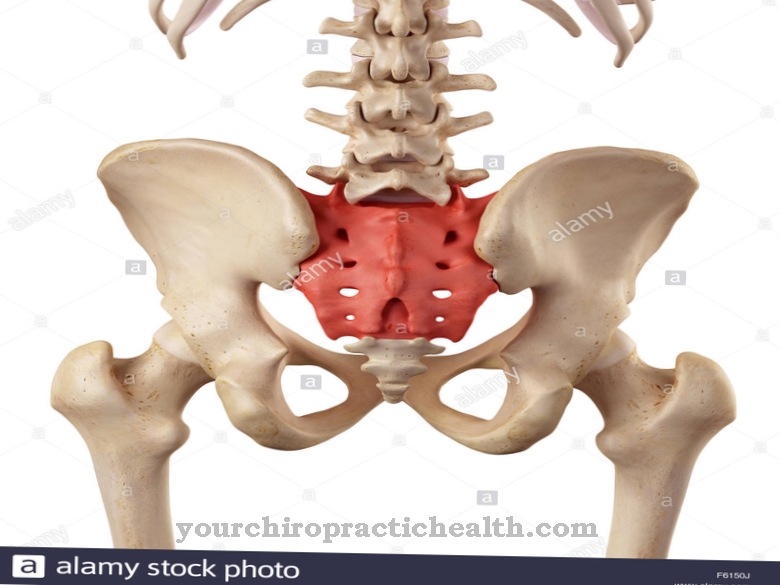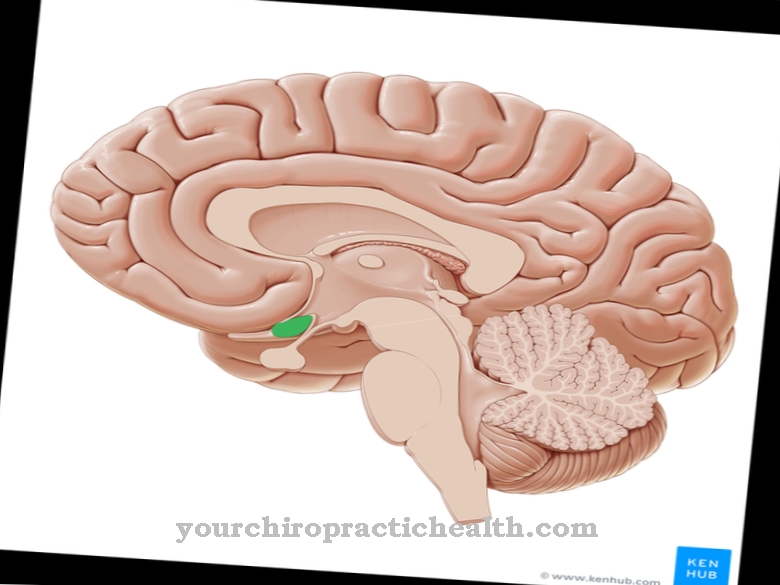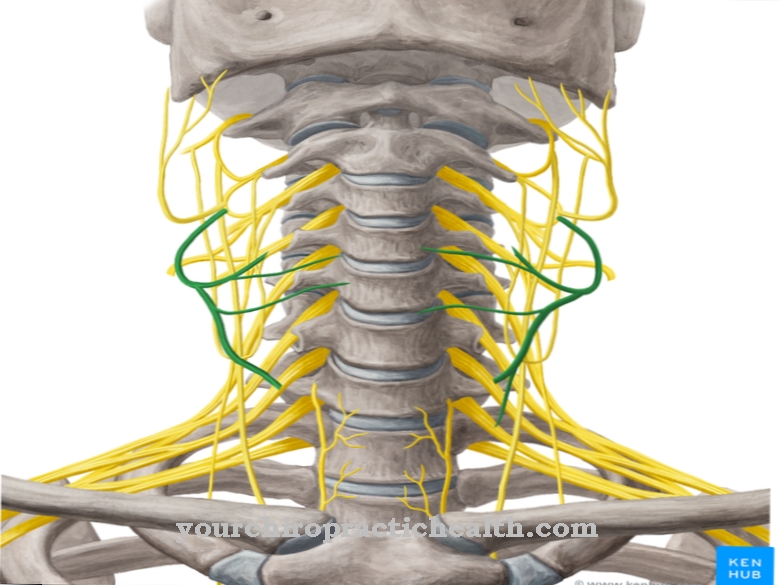Of the Jejunum is the middle section of the small intestine between the duodenum and the ileum. Its main function is to absorb nutrients from the chyme. Independent diseases of the jejunum are not known.
What is the jejunum?
Colloquially, the middle part of the small intestine is called the empty intestine. This name comes from the fact that this section of the intestine always appears empty in the deceased. Its latin name is Jejunum. In humans, the jejunum is approximately 2 to 2.5 meters long. The boundary between the duodenum and jejunum is defined. It is located in the area of the second lumbar vertebra. However, there is no sharp boundary at the transition between the empty intestine and ileum.
The structure and function of both intestinal sections are similar, but not identical. The differences can, however, only be determined in the tissue. Due to the gradual change in the structure of the intestinal wall, there is also a gradual change in the absorbed nutrients. Starting from the jejunum to the ileum, fat-soluble vitamins, proteins, water-soluble vitamins and fats are first absorbed in the following order. Venom and ileum thus represent a functional unit of the small intestine, so that the functions, structure and diseases of both sections are usually considered together in the medical literature.
Anatomy & structure
The jejunum, which is laid in numerous loops, is attached to the abdominal wall via the mesentery. The following ileum is also involved in this suspension structure, which is called the radix mesenterii or mesentery of the small intestine.
This structure begins at the duodenum-jejunum curve and ends at the transition from the ileum to the large intestine. Since the jejunum loops are very mobile, their position can also be changed. As an organ that is very active in movement, the small intestine does not have a constant length. It is between 3.5 and 6 meters. The length depends on the state of contraction of the small intestine. Like all other hollow organs, the empty intestine has a mucous membrane (tunica mucosa). Then follows a double layer of smooth muscle. The conclusion is a connective tissue coating (serosa coating) of the peritoneum.
In addition to the ileum, appendix and ascending colon, the jejunum is supplied by the "superior mesenteric artery". Starting from this artery, the arteriae jejunales are specifically responsible for supplying the jejunum. To the right of the superior mesenteric artery is the superior mesenteric vein, which drains the used blood from the jejunum to the portal vein. The function and movement of the jejunum is controlled by the enteric nervous system. As part of the enteric nervous system, the myenteric plexus is responsible for the peristalsis and motility of the esophagus, stomach, small intestine (including jejunum) and large intestine.
Function & tasks
In addition to the duodenum and ileum, the empty intestine has the function of absorbing nutrients from the enzymatically processed chyme. Important substances ingested from food are fats, proteins, carbohydrates, minerals, vitamins, salts and water. These substances then pass into the blood and reach all parts of the body. In order to be able to effectively absorb the nutrients in the chyme, the small intestine must develop as large a surface as possible.
Various structures develop, such as the Kerkig folds (Plicae circulares), the small intestine villi (Villi interstinales), the Lieberkühn crypts (Glandulae interstinales) and the microvilli. The Kerkig folds create the rough relief of the small intestine. Both the mucosa and the submucosa are everted. Small intestine villi are finger-shaped protuberances of the epithelium and lamina propria. The tubular depressions in the valleys of the villi are called Lieberkühn crypts. The microvilli enlarge the intestinal mucosa ten-fold. As a so-called brush border, they represent the micro-relief of the mucous membrane. All three parts of the small intestine contain these structures.
However, their shape and size depends on where they are. The Kerkig folds from the duodenum via the jejunum to the ileum become ever lower. Furthermore, the villi in the empty intestine are the longest with a finger-shaped structure. These fine tissue differences determine which nutrients are mainly absorbed. The chyme is transported through the peristalsis of the small intestine from the stomach to the large intestine. His contractions from the duodenum to the jejunum to the ileum become slower and slower.
Diseases
Independent diseases of the jejunum are very rare. Usually the jejunum is affected secondarily in the context of other diseases of the small intestine. In addition, abdominal pain can often not easily be assigned. For example, intensive examinations are sometimes required to determine whether the small intestine, the large intestine or even the entire intestine is affected.
Many diseases of the small intestine initially cause unspecific pain in the lower abdomen. Diseases of the large intestine, the pancreas, the peritoneum or the bile are to be distinguished from this. Diseases of the small intestine are often associated with wave-like pain or colic. Causes include general gastrointestinal inflammation, intestinal ulcers or mesenteric infarcts. Inflammation of the small intestine is called enteritis. Enteritis can be caused by infection with a variety of bacteria or viruses.
However, autoimmune diseases such as Crohn's disease or ulcerative colitis can also cause inflammation of the small intestine. In contrast to Crohn's disease, ulcerative colitis usually only affects the large intestine. In some cases, however, the small intestine can also be involved. Food intolerance creates reactions in the small intestine. So-called celiac disease is triggered by an intolerance to gluten. In this disease, the intestinal villi shrink so drastically that the absorption of nutrients is severely restricted. Colon cancer is very rare in the small intestine and especially in the empty intestine, because the rapid passage of the chyme means that carcinogenic substances can only have a short-term effect.
Typical & common bowel diseases
- Crohn's disease (chronic bowel inflammation)
- Inflammation of the intestine (enteritis)
- Intestinal polyps
- Intestinal colic
- Diverticulum in the intestine (diverticulosis)


.jpg)






















.jpg)


